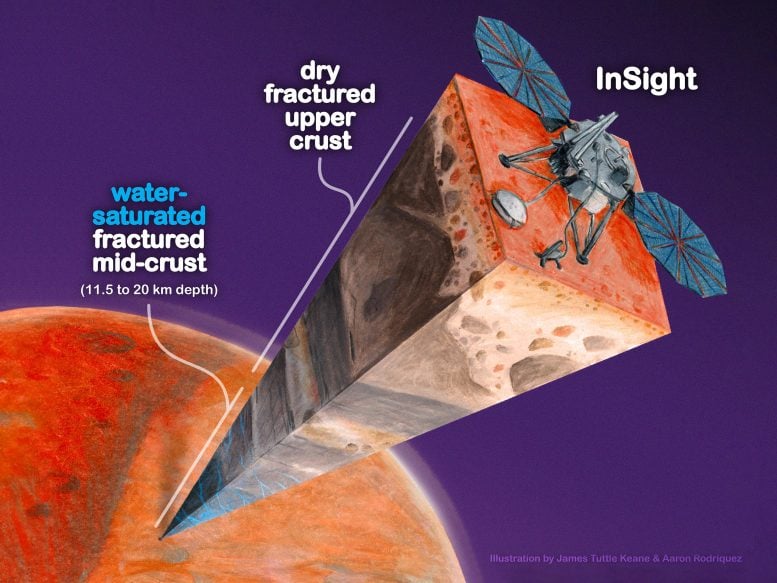
A cutout of the Martian interior beneath NASA’s Insight lander. The top 5 kilometers of the crust appear to be dry, but a new study provides evidence for a zone of fractured rock 11.5-20 km below the surface that is full of liquid water — more than the volume proposed to have filled hypothesized ancient Martian oceans. Credit: James Tuttle Keane and Aaron Rodriquez, courtesy of Scripps Institute of Oceanography, edited
Recent findings from the Mars InSight mission indicate that Mars may have liquid water within its crust, a revelation that enhances the planet’s potential habitability and propels the search for life.
Led by Vashan Wright, the research team analyzed Marsquake data to deduce the presence of sub-surface liquid water, providing exciting possibilities for understanding Mars’ climate and geological history.
Data about Mars’ planetary crust gathered from the Mars InSight lander are best explained by the conclusion that the crust has stores of liquid water.
Analysis led by Vashan Wright, a geophysicist at the University of California, San Diego’s Scripps Institution of Oceanography, provides the best evidence to date that the planet still has liquid water in addition to that frozen at its poles. If that conclusion is true, it sets the stage for new research considering the planet’s habitability and continuing a search for life that exists on a place other than Earth. The potential presence of liquid water on Mars has tantalized scientists for decades. Water is essential for a habitable planet.
“Understanding the Martian water cycle is critical for understanding the evolution of the climate, surface, and interior,” Wright said. “A useful starting point is to identify where water is and how much is there.”
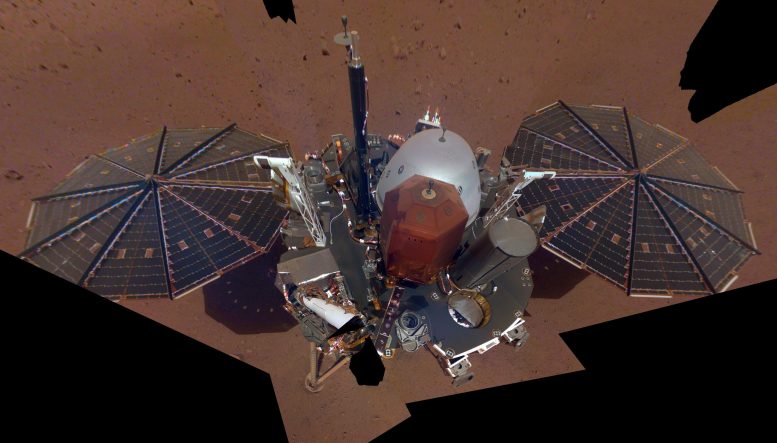
This is NASA InSight’s first full selfie on Mars. It displays the lander’s solar panels and deck. On top of the deck are its science instruments, weather sensor booms, and UHF antenna. The selfie was taken on December 6, 2018 (Sol 10). Credit: NASA/JPL-Caltech
The study appears the week of August 12 in the journal Proceedings of the National Academy of Sciences. The Canadian Institute for Advanced Research, the National Science Foundation, and the US Office of Naval Research supported the work. Besides Wright, study authors are Matthias Morzfeld from Scripps Oceanography and Michael Manga from the University of California Berkeley.
Wright’s team used data that InSight collected during a four-year mission ending in 2022. The lander collected information from the ground directly beneath it on variables such as the speed of Marsquake waves from which scientists can infer what substances reside beneath the surface. The data were fed into a model informed by a mathematical theory of rock physics. From it, the researchers determined that the presence of liquid water in the crust most plausibly explained the data.
“While available data are best explained by a water-saturated mid-crust, our results highlight the value of geophysical measurements and better constraints on the mineralogy and composition of Mars’ crust,” the authors wrote.
Reference: “Liquid Water in the Martian Mid-Crust” 12 August 2024, Proceedings of the National Academy of Sciences.
DOI:10.1073/pnas.2409983121

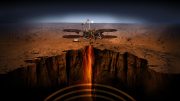

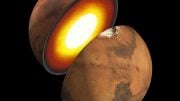
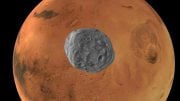
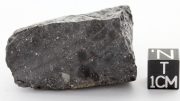
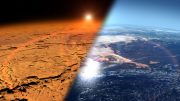
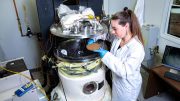
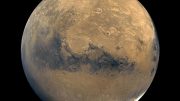
Be the first to comment on "Did We Just Find Liquid Water on Mars? NASA InSight Lander’s Surprising Data"